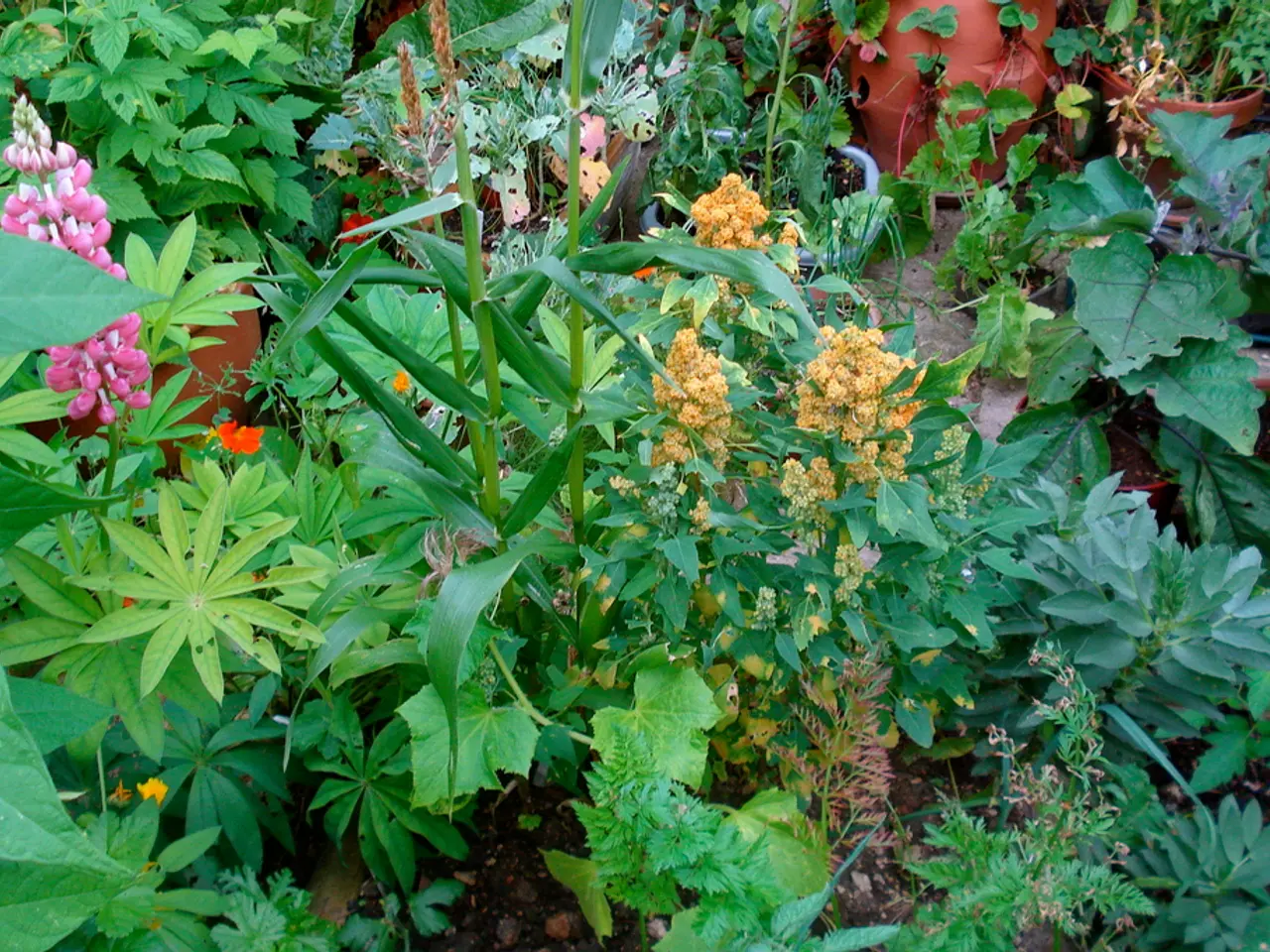Bold-Flavored Edibles for Enhancing Your Blooming Garden's Taste Profile
In the realm of gardening, the concept of edible landscaping is growing in popularity. This innovative approach combines the beauty of an ornamental garden with the functionality of a kitchen garden, creating a space that is both visually appealing and nutritious.
The humble dandelion, a common garden plant, is not just a weed but an edible delight with a slightly bitter taste. Pansy plants, with their vibrant colours, offer a peppery flavour to salads and teas. Groundnut, a native plant, provides edible nuts that can be enjoyed raw or roasted.
One of the standout stars of edible landscaping is Swiss chard (Beta vulgaris var. cicla). Its colourful, ornamental stems and leafy greens are not only a feast for the eyes but also a rich source of nutrients, suitable for salads and cooking. Kale, available in decorative varieties like ‘Dwarf Blue Curled’ and ‘Redbor,’ adds visual appeal with its curly, colored leaves while providing a rich source of vitamins.
Native shrubs like Serviceberry (Amelanchier arborea) produce tasty fruits and support wildlife, adding beauty and biodiversity to a garden. Black Chokeberry, Pawpaw, Spicebush, and Chinquapin are other native edible plants recommended for sustainable landscapes.
Edible flowers and plants such as zinnia, sunflower, dahlia, roses, hollyhock, calendula, and tree spinach (glitter spinach) provide vibrant colours while their flowers or young foliage can be eaten or used in salads and teas. Raspberry canes offer a visually appealing backdrop with green foliage and white flowers, plus edible fruit harvests.
Herbs, with their varied foliage and flowers, are edible and attractive to pollinators. Examples include chive plants, bee balm, anise hyssop, borage, and the peppery-zing Nasturtiums. Sumac berries, with a lemonade-like taste, and the tart flavour of Hibiscus flowers are other edible delights.
Fruits like cranberry Viburnum, Honeysuckle shrubs, Cascade Oregon grape, and Black Walnut trees offer edible berries and flowers, while squash and their tumbling vines provide edible fruits. Even trees like Basswood and American beech offer edible flowers and leaves.
Gardening with edible plants doesn't have to be chaotic but can be elegant. For instance, Dinosaur kale, with its deeply green foliage and a crinkled texture, is edible and adds a unique touch to a kitchen garden. Edible sweet potato leaves are attractive and heart-shaped, while carrots with their feathery fronds are edible too.
Nodding onion, a native plant, has edible bulbs, and the variety "Bright Lights" Swiss chard boasts a rainbow of colours in its stems. Peppers of various types are edible and come in various colours. Mums, traditionally ornamental plants, are edible and can be used as ornamental plants. Coastal strawberry, Viola plants, and Elderberry shrubs are other edible plants that can be incorporated into an edible landscape.
With a little planning, edible plants for landscaping can be blended cohesively with other ornamental specimens. Chive plants, Daylily plants, and Lilac shrubs are examples of edible plants that can add beauty to a garden. Orange blossoms, found on shrubs, and Hibiscus flowers are other edible delights that can add a touch of elegance to an edible landscape.
Redbud shrubs can add dimension and form to the garden, while Rose shrubs can produce fruit. Sunflowers, with their tall, majestic stalks and edible seeds, have a long history of use in various cultures. Lilac shrubs are edible and can provide flowers for consumption.
In conclusion, edible landscaping offers a wonderful opportunity to create a garden that is not just beautiful but also nutritious and sustainable. Whether you're growing herbs for flavour, fruits for jams and jellies, or vegetables for your meals, edible landscaping allows you to enjoy the fruits of your labour while admiring the beauty of your garden.
- Swiss chard and kale, with their vibrant colors and rich nutritional content, are not only decorative additions to an edible landscape but also versatile ingredients for various cooking recipes.
- Sunflowers, not only for their towering beauty in home-and-garden settings, but also for their edible seeds, have a long history of contribution to food-and-drink culture, particularly in diverse cuisines worldwide.




